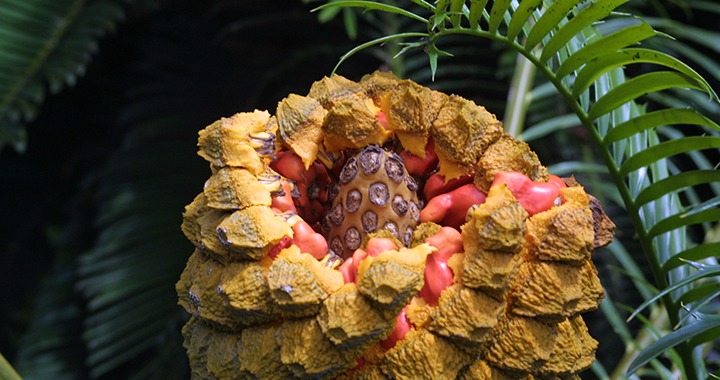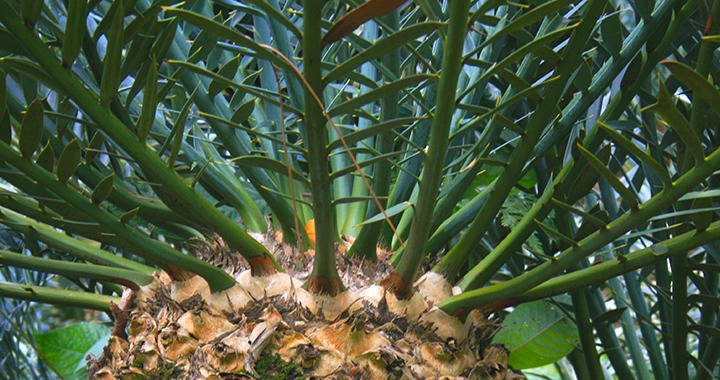Cycads
One of the largest collections of cycads in the world, originating mainly from South Africa, is to be found in the Monte Palace Madeira. These are often described as “living fossils” since they appeared in the Mesozoic Era, two hundred million years ago, and in one’s imagination they are related with extinct dinosaurs from the same period.
One of their peculiarities is the way in which they have evolved, without any changes in appearance, having overcome the great climatic changes and maintaining the characteristics of gymnosperms. They are plants with evergreen leaves, being dioecious (the male and female flowers occur on different plants) and they have bare flowers (without perianths), with ovules not enclosed in an ovary, but arranged in carpels, which insert themselves spirally onto an axis, forming a structure similar to a cone.
Cycads are often confused with palm trees since they both have a head of leaves and the word “cycad” itself is derived from the Greek word “cykos” meaning “similar to the palm tree”.
Cycads are part of the Cycadales Order. The three families currently in existence belong to this Order divided into 11 gender and 185 species. Monte Palace Madeira has more than 700 plants belonging to roughly 60 species, planted here in 1988.
Cycads are highly sensitive plants. Their acclimatization is at times, difficult and this difficulty is intensified by their special method of reproduction.




